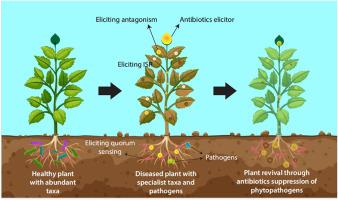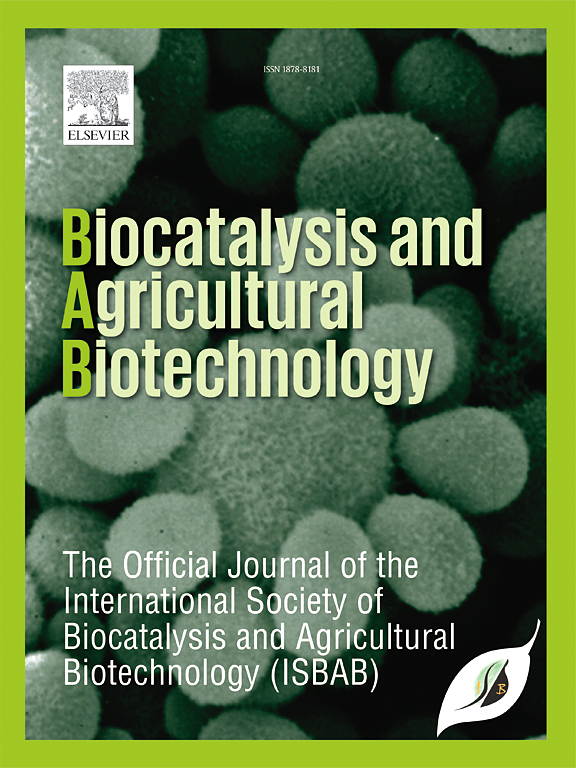Biotic stress alleviation: A sneak peek into the beneficial taxa in rhizosphere
IF 3.4
Q2 BIOTECHNOLOGY & APPLIED MICROBIOLOGY
引用次数: 0
Abstract
Biotic stress is a known cause of considerable agricultural loss, and reducing this loss is crucial for enhancing crop productivity and achieving global food security. Although plants are sessile, they have well-equipped beneficial microbial neighbors in the rhizosphere that can be shaped and recruited to meet their needs, especially during periods of stress. Multiple factors stimulate shifts within beneficial microbes, especially the most malleable bacterial groups, to favour their host, and numerous studies have revealed how biotic stress strongly alters the rhizosphere taxa of plants to predominantly Proteobacteria, Firmicutes and Actinomycetes. To this end, the Actinomycetes-members of these bacterial taxa have been applied as beneficial bioinoculants to control diseases in plants with a dearth utilization of their metabolites (including antibiotics) as chemo-control agents against phytopathogens. Therefore, this review examines how biotic stress shapes key bacterial taxa in the rhizosphere and highlights the potential of Actinomycetes-derived antibiotics and other metabolites to mitigate biotic stress through direct antagonism of pathogens as well as inducing plant defense. This chemo-control approach could potentially replace synthetic chemicals in mitigating biotic stress for crop productivity.

减轻生物压力:窥探根瘤层中的有益分类群
众所周知,生物胁迫是造成大量农业损失的原因之一,而减少这种损失对于提高作物产量和实现全球粮食安全至关重要。虽然植物是无柄的,但它们在根瘤菌圈中拥有装备精良的有益微生物邻居,可以根据它们的需要进行塑造和招募,尤其是在胁迫时期。多种因素刺激有益微生物(尤其是可塑性最强的细菌群)向有利于宿主的方向转变,大量研究揭示了生物胁迫如何强烈改变植物根瘤菌群,使其主要以变形菌、固形菌和放线菌为主。为此,这些细菌类群中的放线菌已被用作有益的生物接种剂来控制植物的病害,但它们的代谢产物(包括抗生素)却很少被用作植物病原体的化学控制剂。因此,本综述探讨了生物胁迫如何影响根瘤菌圈中的主要细菌类群,并强调了放线菌类衍生的抗生素和其他代谢物通过直接拮抗病原体和诱导植物防御来减轻生物胁迫的潜力。这种化学控制方法有可能取代合成化学品,减轻生物压力,提高作物产量。
本文章由计算机程序翻译,如有差异,请以英文原文为准。
求助全文
约1分钟内获得全文
求助全文
来源期刊

Biocatalysis and agricultural biotechnology
Agricultural and Biological Sciences-Agronomy and Crop Science
CiteScore
7.70
自引率
2.50%
发文量
308
审稿时长
48 days
期刊介绍:
Biocatalysis and Agricultural Biotechnology is the official journal of the International Society of Biocatalysis and Agricultural Biotechnology (ISBAB). The journal publishes high quality articles especially in the science and technology of biocatalysis, bioprocesses, agricultural biotechnology, biomedical biotechnology, and, if appropriate, from other related areas of biotechnology. The journal will publish peer-reviewed basic and applied research papers, authoritative reviews, and feature articles. The scope of the journal encompasses the research, industrial, and commercial aspects of biotechnology, including the areas of: biocatalysis; bioprocesses; food and agriculture; genetic engineering; molecular biology; healthcare and pharmaceuticals; biofuels; genomics; nanotechnology; environment and biodiversity; and bioremediation.
 求助内容:
求助内容: 应助结果提醒方式:
应助结果提醒方式:


